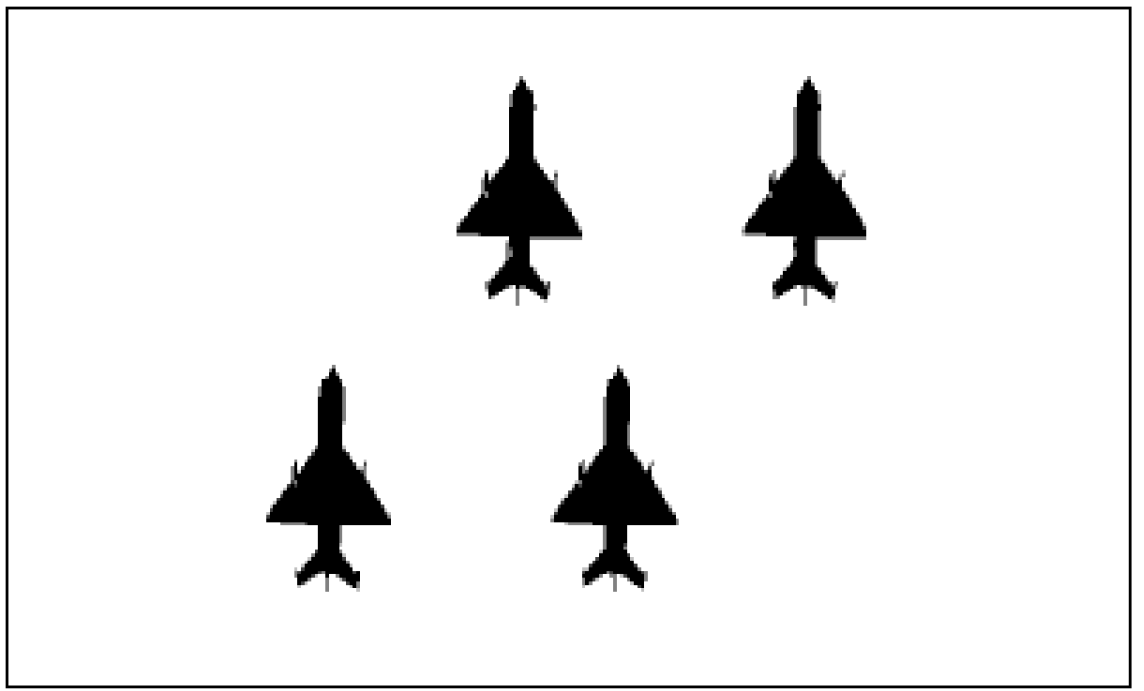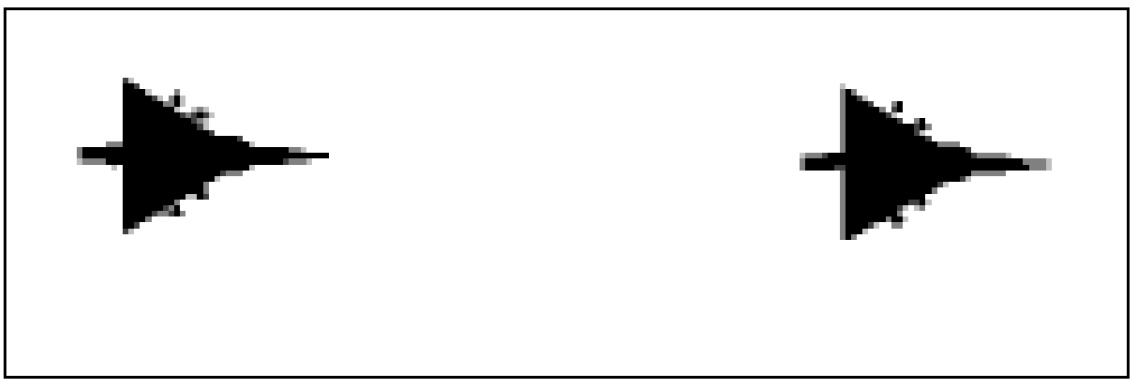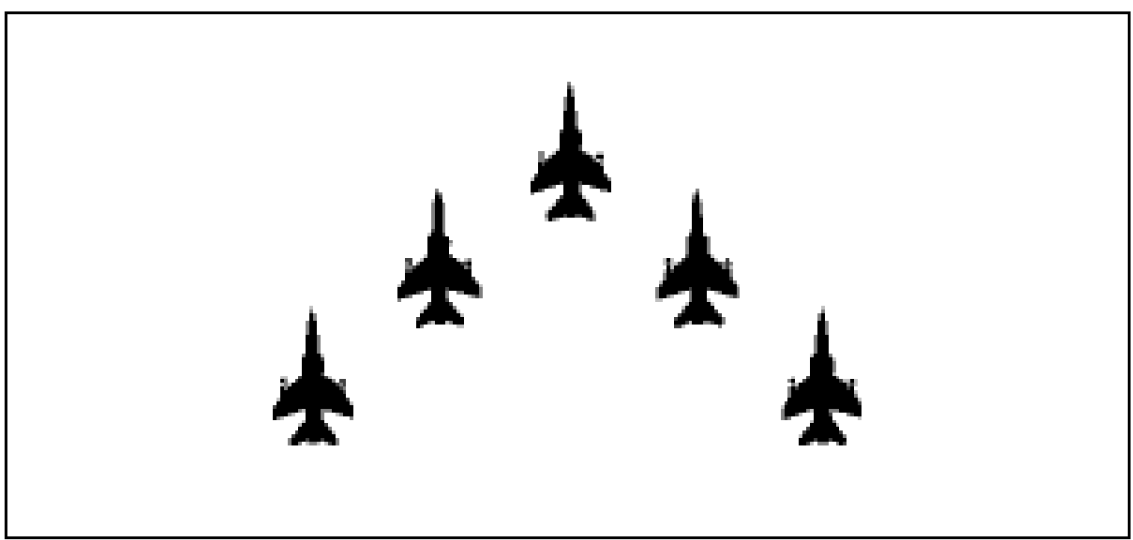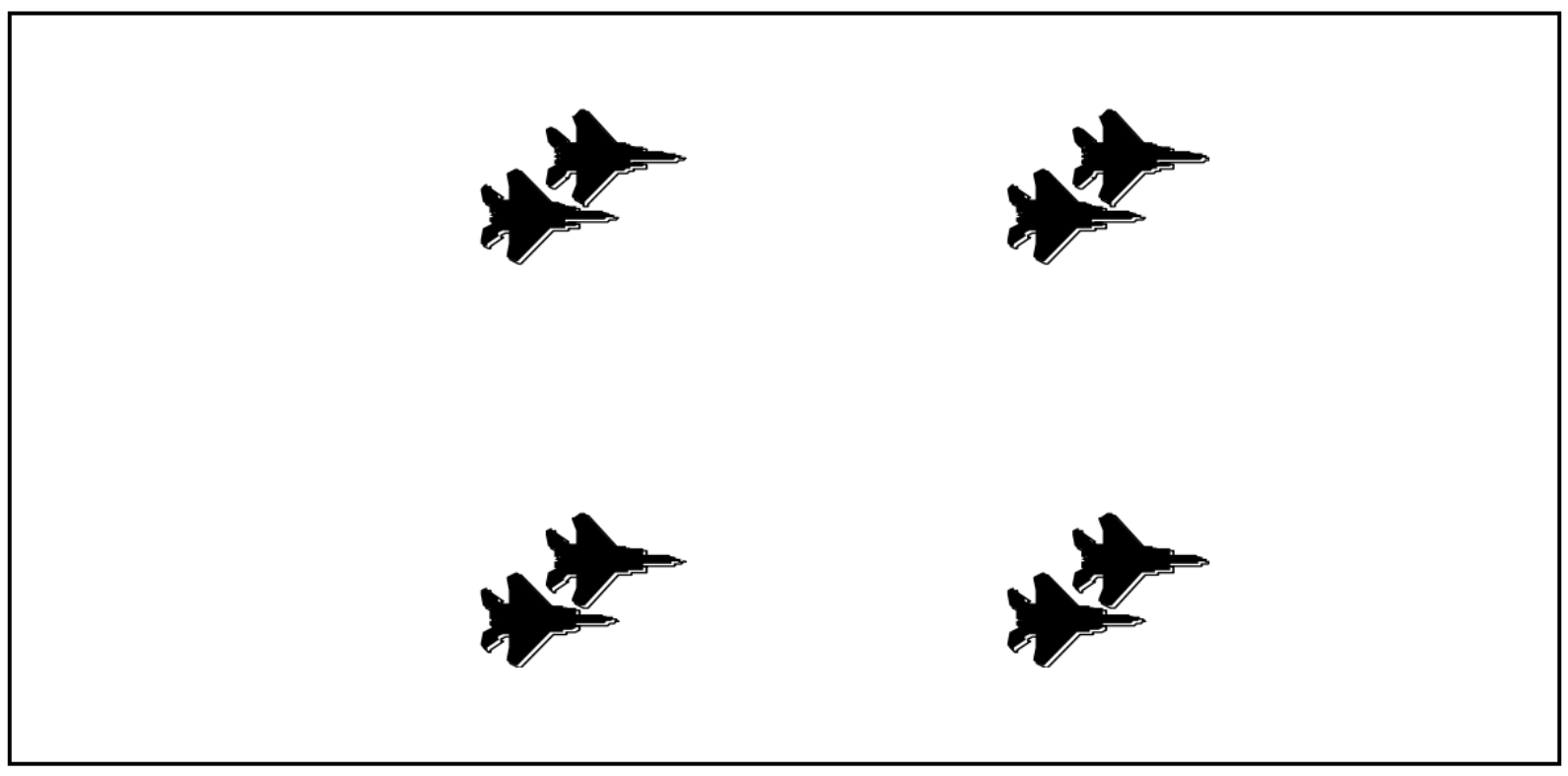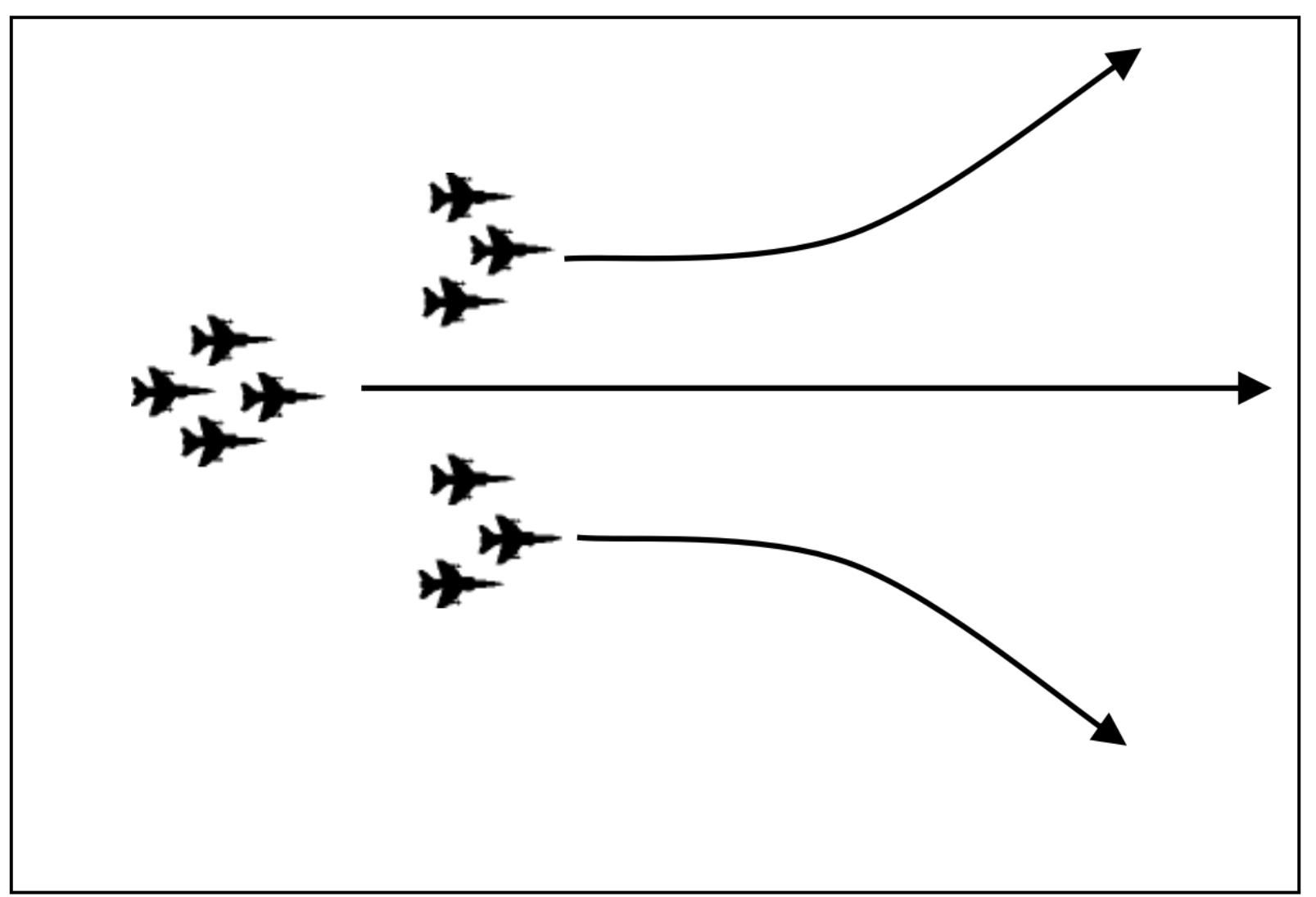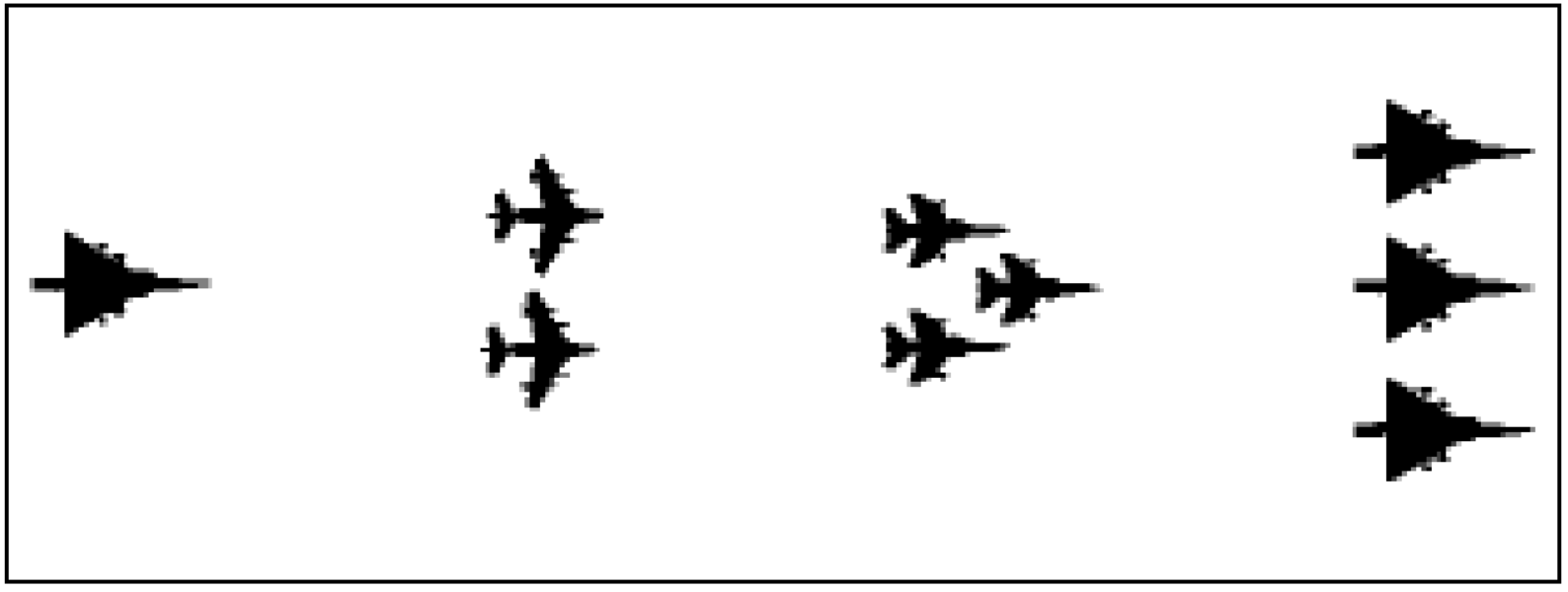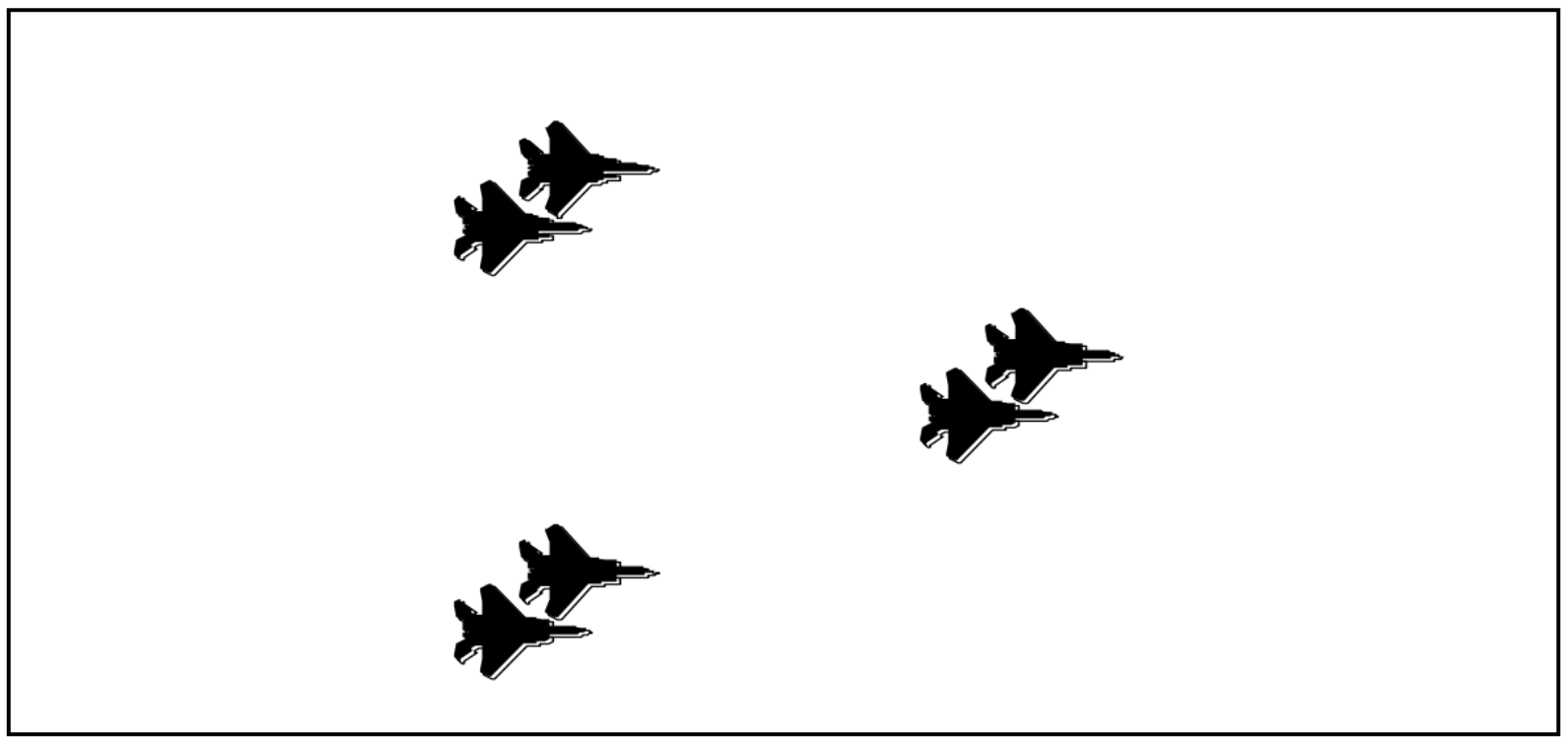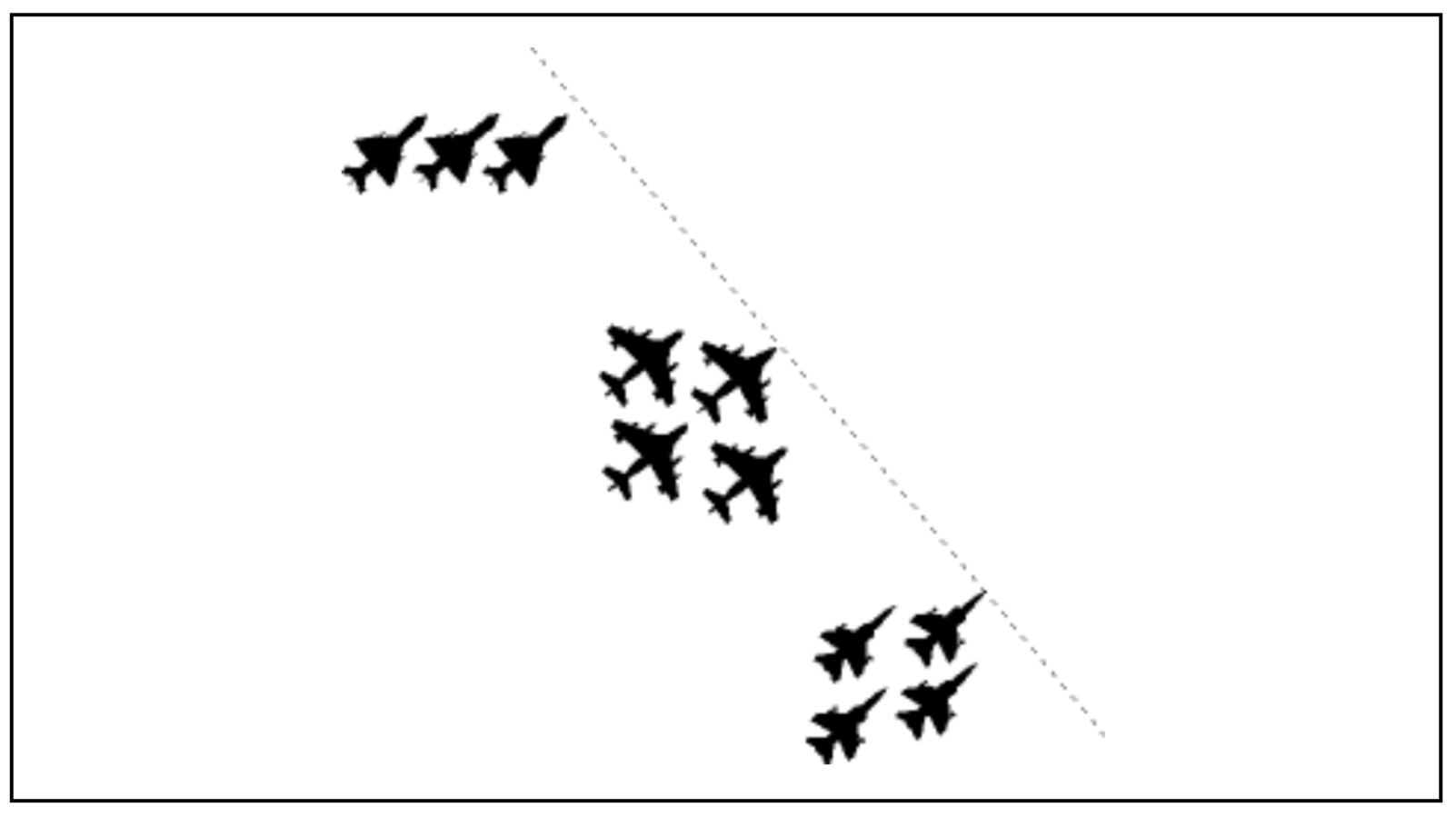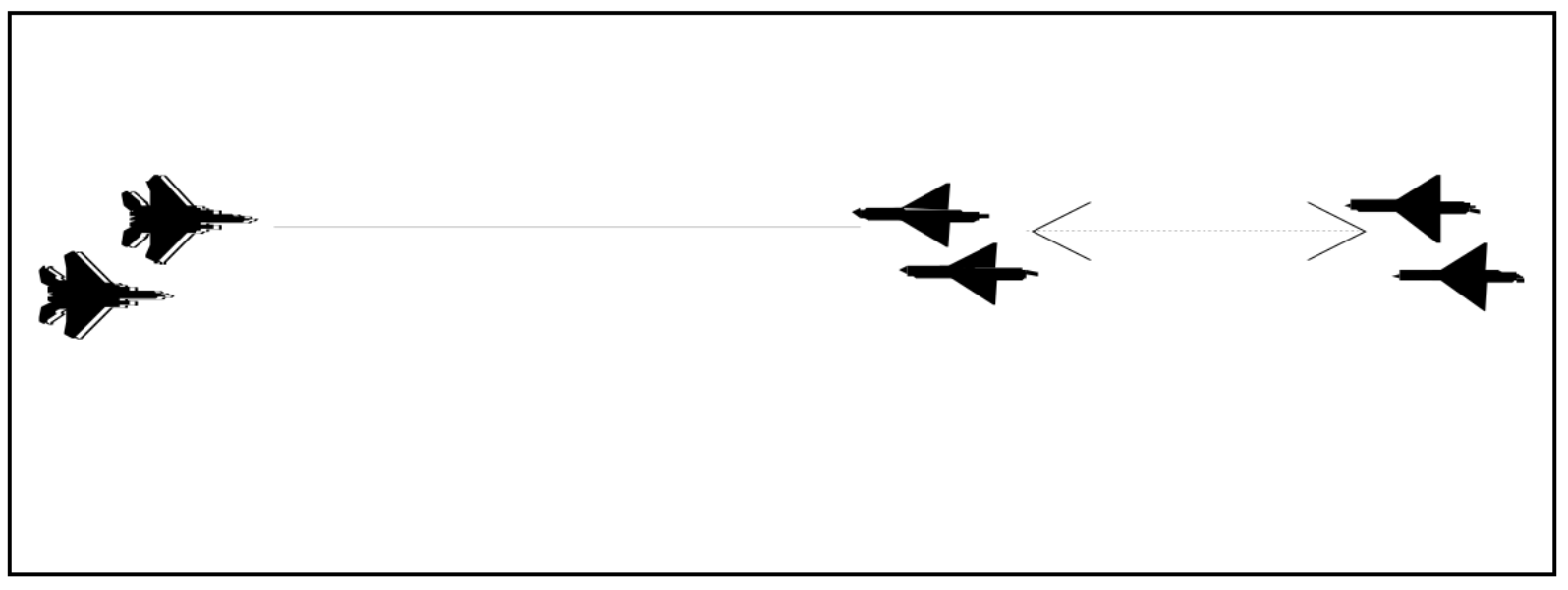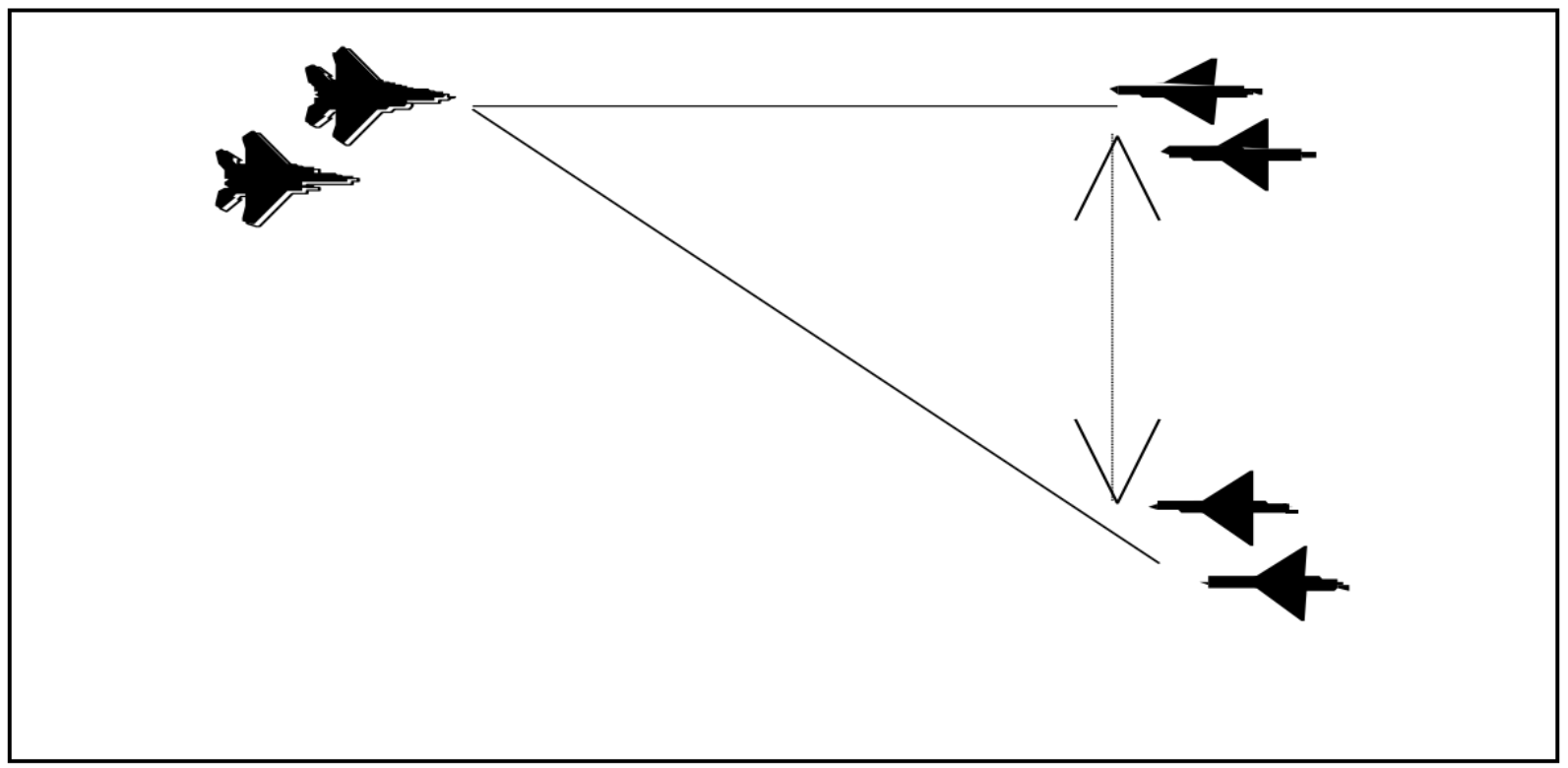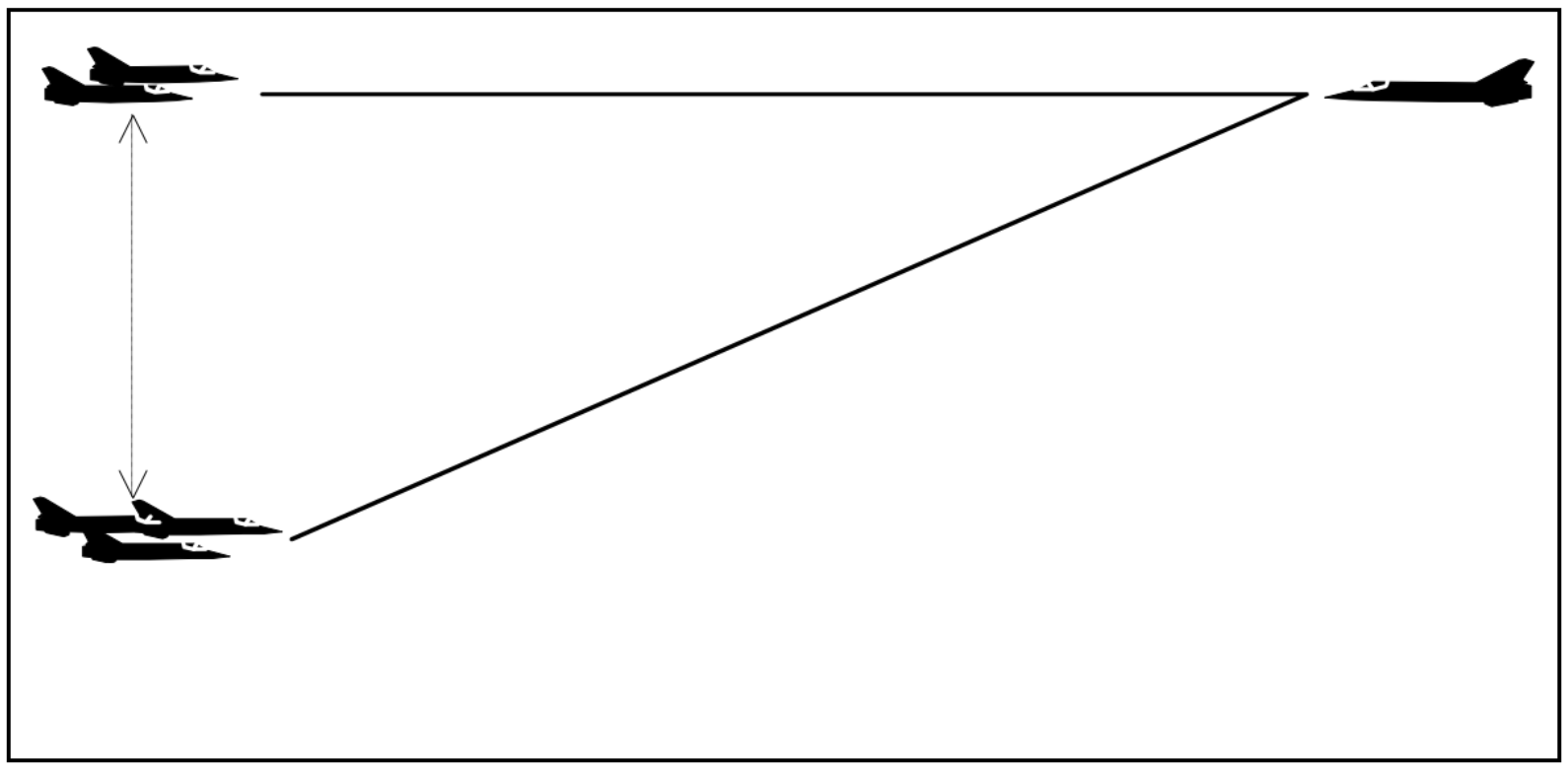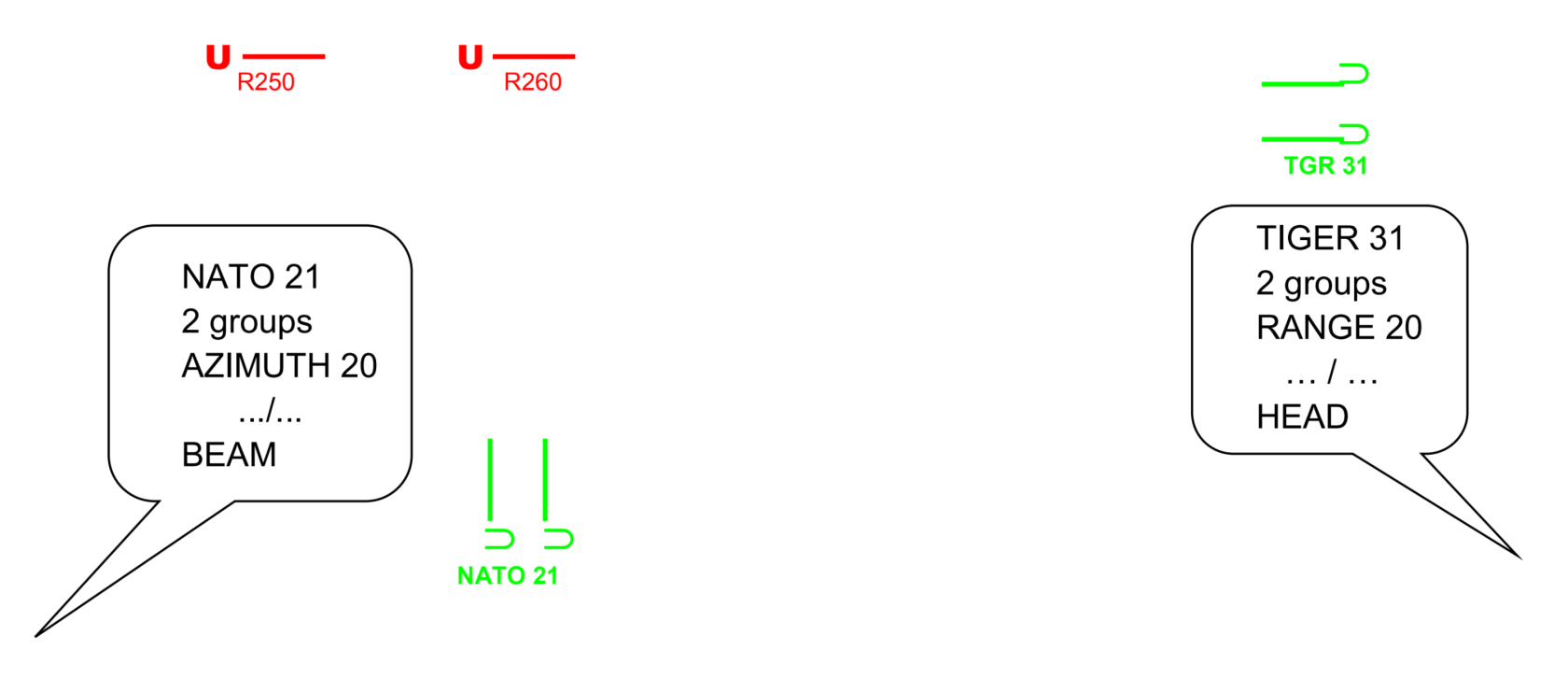5-Flight Formations
Diese Seite befindet sich derzeit im Aufbau. Einige der angebotenen Inhalte können unvollständig sein oder Fehler enthalten.
Introduction
This module aims to give you an insight into some of the most commonly used combat tactics and flight formations.
Codewords are used extensively for pre-flight briefings and during the mission to exchange information and instructions, so you must be fully aware of them. After completion of this module, you will be able to:
- Understand the meaning of the flight formation code words.
- Use the correct code words to describe a package/group composition.
Flight Formations within a group
The following Flight Formations describe the relative positions of aircraft within a group. These terms are used by pilots describing what they detect with their radar. As the relative positions between aircraft within a group may be very tight, the controller should not use them but he must understand them when pilots describe a group composition.
CONTAINER
An attack of four distinct aircraft with two in front and two behind flying in a square formation.
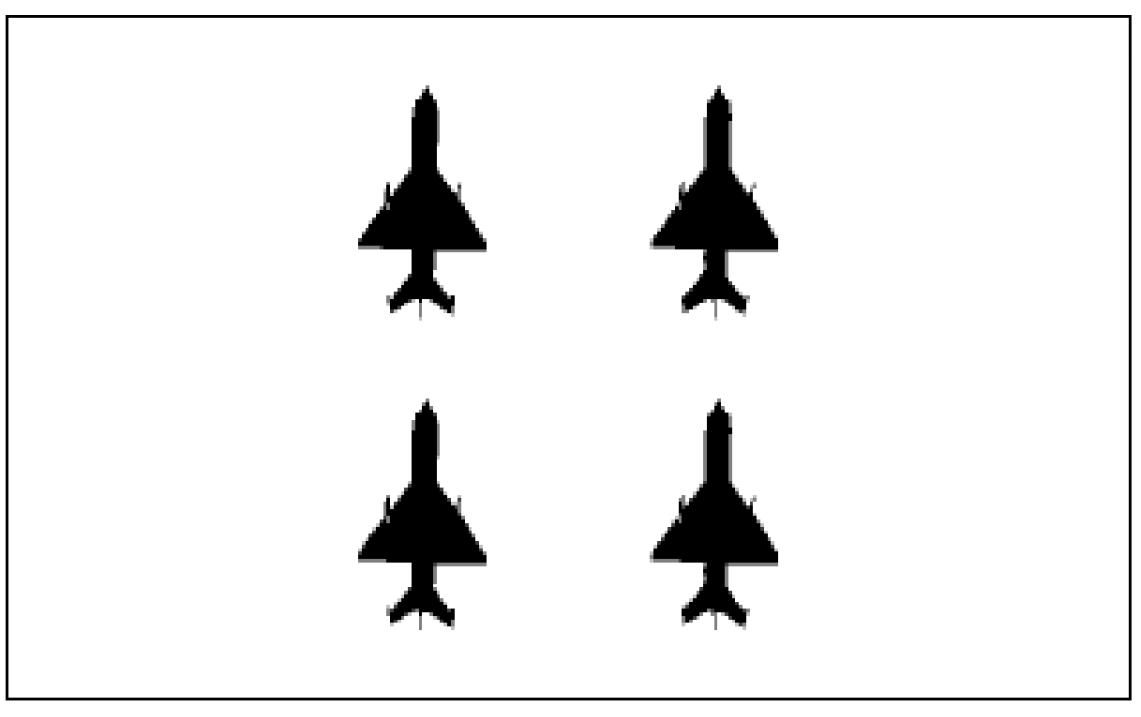 e.g. “4 a/c Container”
e.g. “4 a/c Container”
OFFSET CONTAINER
An attack of four distinct aircraft with two in front and two behind. The 2 trailers are moved laterally to an offset position left or right.
CARD
An attack of four distinct aircraft with one in front, two laterally displaced and one behind.
 e.g. “4 a/c left Offset Container”
e.g. “4 a/c left Offset Container”
COLUMN
Tactical formation of several aircraft flying in trail formation.
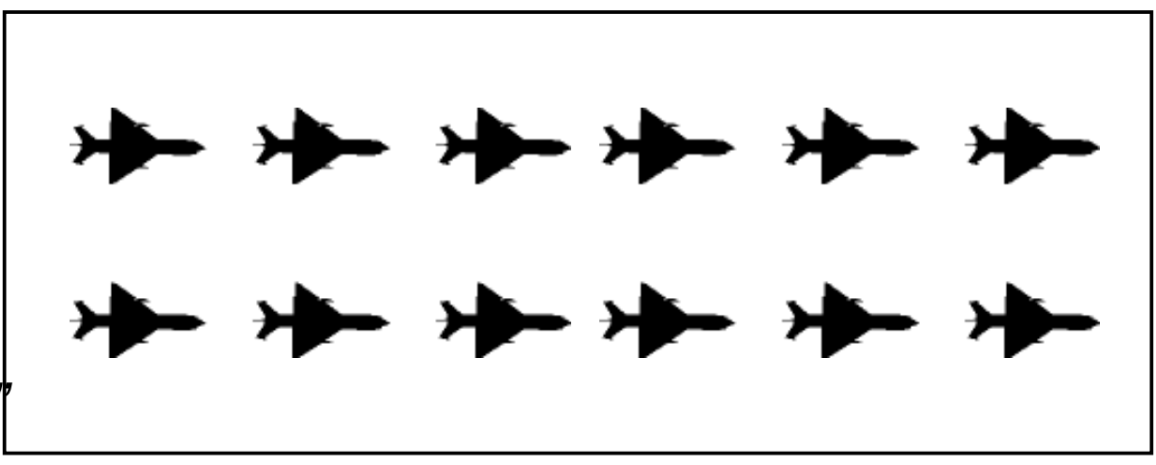 e.g. “4 a/c Card”
e.g. “4 a/c Card”
ECHELON (Cardinal direction)
Contacts with wingman displaced approximately 45° behind leader's wing line.
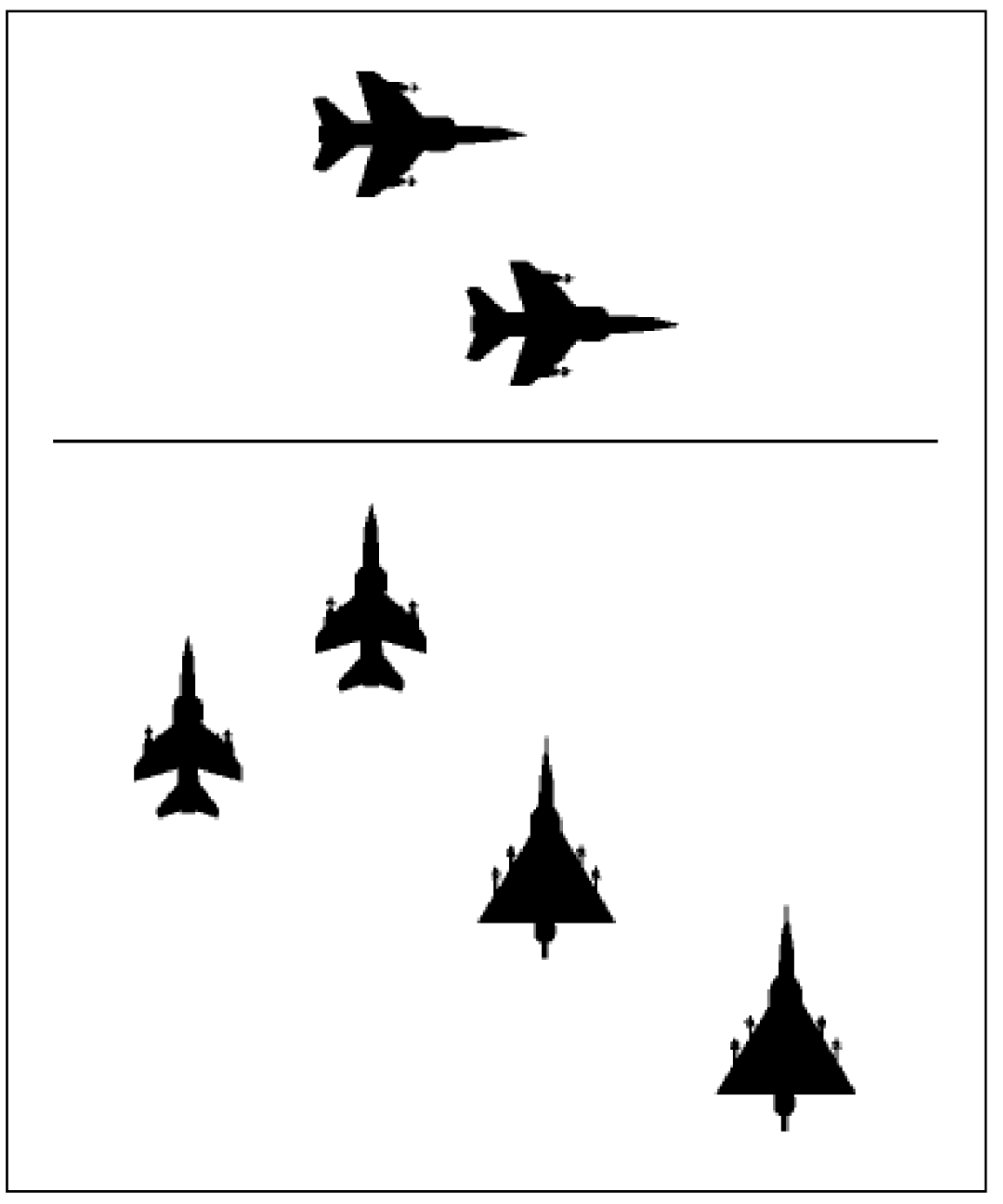 e.g. top ”2 a/c Echelon North”
e.g. top ”2 a/c Echelon North”
bottom “4 a/c echelon east”
TRAIL
Tactical formation of two aircraft following one another.
e.g. “Two a/c in trail”
TRAILER
The last aircraft/group/formation in a formation following (in trail) an aircraft/group/formation at a range which cannot include him within the previous group.
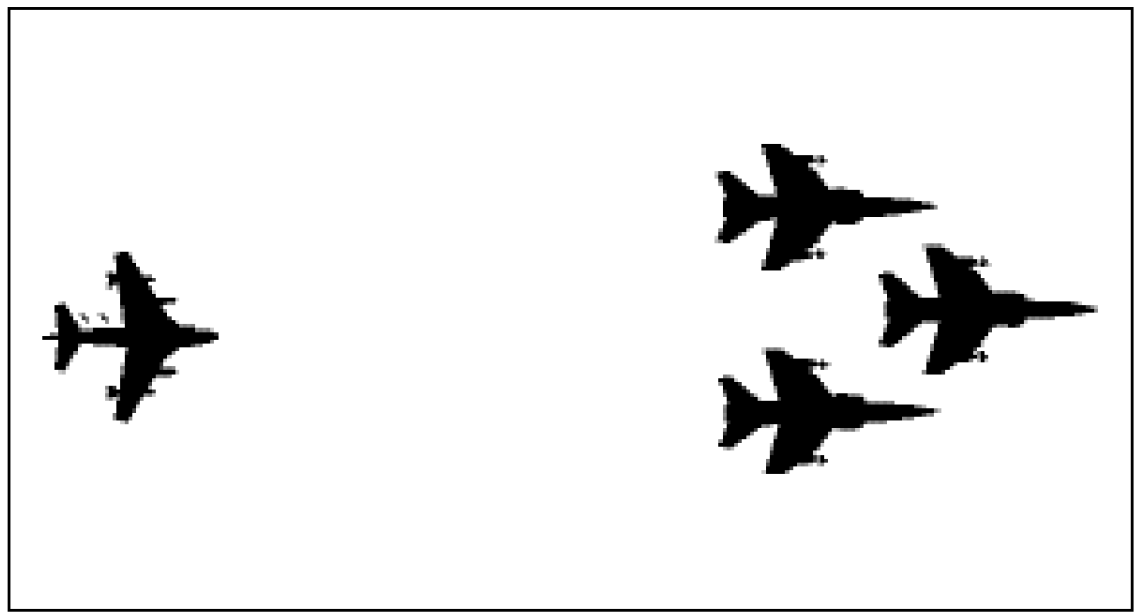 e.g. “One group VIC, one trailer 5”
e.g. “One group VIC, one trailer 5”
LINE ABREAST
Two or more contacts side-by-side.
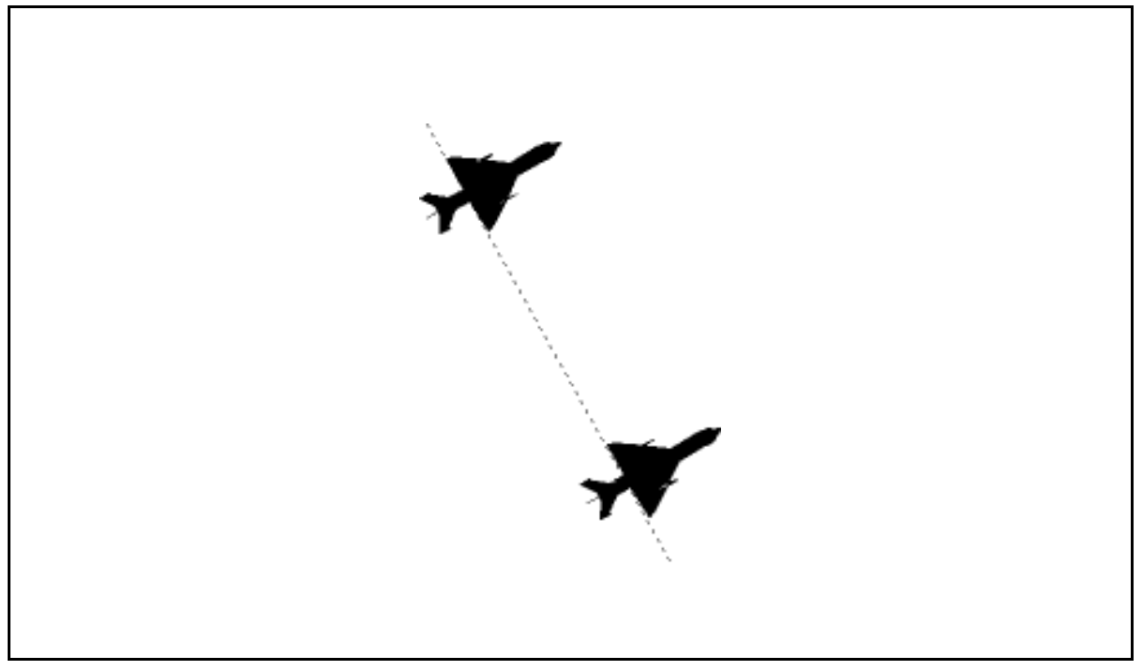 e.g. “2 contacts, line abreast, 2”
e.g. “2 contacts, line abreast, 2”
STINGER
Formation of three or more aircraft with a single in TRAIL.
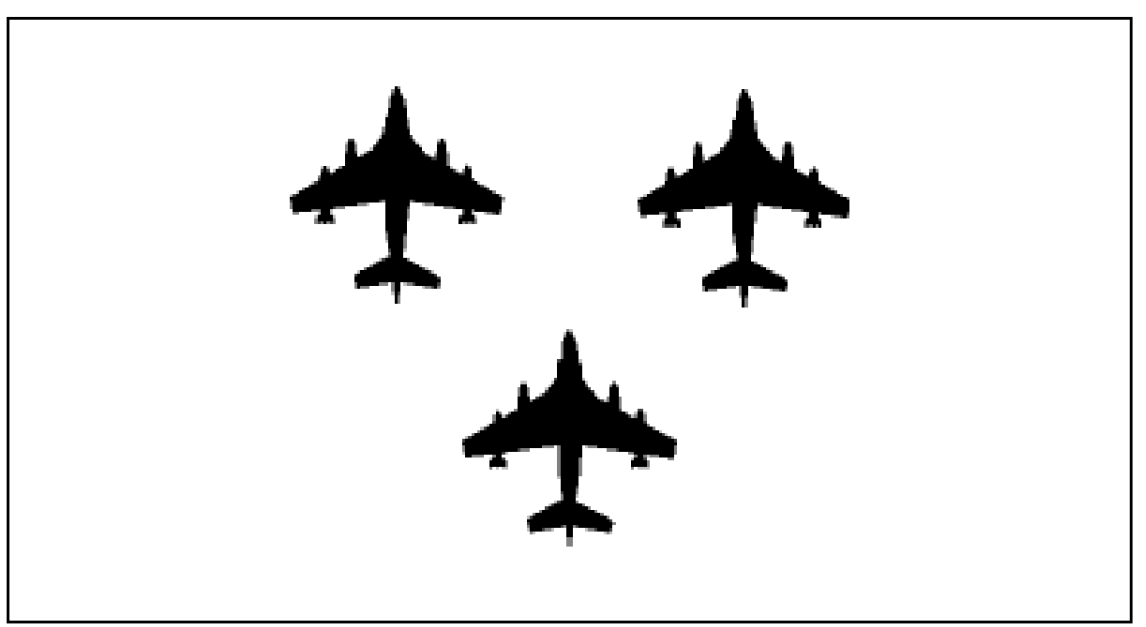 e.g. “3 contacts, stinger”
e.g. “3 contacts, stinger”
WEDGE
Tactical formation of three or more aircraft with the single in front and the others aircraft laterally displaced on either side behind the leaders wing line.
e.g. “Five contacts, Wedge”
Description of groups position
The following Flight Formations describe the relative positions of groups between each other. The controller should use them to describe the picture.
BOX
An attack of four distinct groups with two in front and two behind flying in a square formation.
e.g. “4 groups Box”
CHAMPAGNE
A picture label describing 3 distinct GROUPS with 2 in front and one behind from a God’s-eye-view. The two lateral groups will intend to decoy the opposite fighters when the central one will try to engage. This term is also used to describe this manoeuvre.
e.g. "3 groups, Champagne"
LADDER
Three or more groups/formations in trail.
e.g. “3 groups, ladder, plus 1 trailer”
VIC
Three groups with the single closest in range and an element in trail. The closest will be named leader group, the trailers will be named e.g. eastern trailer group and western trailer group.
e.g. “3 groups, Vic”
WALL
Three or more groups/formations line abreast/side-side.
e.g. “Three groups, Wall”
RANGE SPLIT
Two or more groups primarily separated in distance along the same bearing.
e.g. “Two groups, Range Split 15”
AZIMUTH SPLIT
Two or more groups primarily separated in bearing from a Fighter point of view. To use to describe Wall, Champagne… formations).
e.g. “Two groups, Azimuth Split 15”
STACK
Two or more groups, close to each other’s, but separated in altitude. Use High and Low to label the groups.
e.g. “Two groups, stack, low group 5000, high group 26000”
Remember that the terms RANGE and AZIMUTH refer to the pilot point of view, not the relative position of the groups between each other.
Example : The following example shows the different term to be used according to the position of the fighters you talk to.

